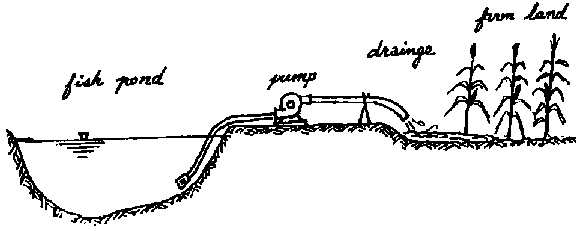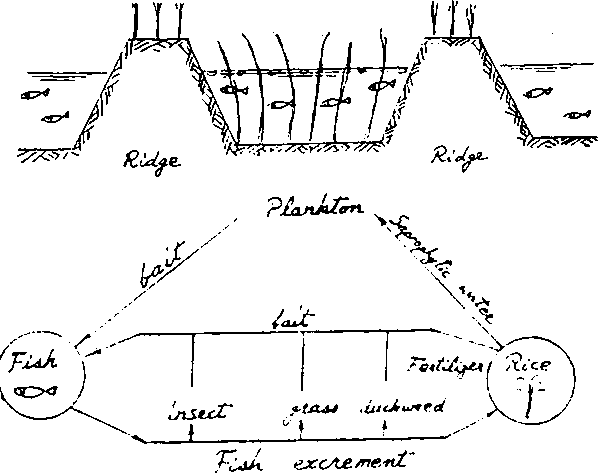Method of cleaning and disinfecting a fish pond
Raising young fish in paddy fields
Flushing water to clean pond
Planting of specially bred plants
Disinfecting the pond by quick lime
Fish production can be effectively increased by cleaning and disinfecting a fish pond during Nov.-Feb. for which the following method is locally used in China.
Flush out the pond water in winter, and strengthen the sides and ridge of the pond. The pond sediment is used as crop fertilizer by throwing it on the nearby farmland.

After the pond water is flushed out, some crops such as oil plants and green manure can be cultivated by which the soil can be improved and fish diseases controlled.

This is usually done on a clear day about 10 days before putting the baby fish in the pond. The shallow pond is disinfected splashing dissolved raw lime at a rate of 750 to 1025 kg/ha of pond area. Also, if preferred, the dissolved raw lime can be loaded on to a square-bottomed bamboo basket and pulled by rope from one bank to another so that the lime is evenly distributed in the pond as shown below.

Raising young fish in the paddy fields before spring transplanting is an effective way to resolve the problem of getting a source of young fish for ponds and reservoirs in the mountainous regions.
The ridge of the paddy field is heightened, green manure and organic fertilizer is put as base fertilizer and the fields leveled by plowing and raking. When the depth of stored water is 20 to 25 cm, 450 kg/ha raw lime or 625 kg/ha tea bran are applied to sterilize the paddy field. After this 3000 to 4500 kg/ha of organic fertilizer is applied. When the water temperature is stable at 18 - 20 ° C, 0.75 million to 1.5 million /ha 'young fish can be put in to the paddy fields. Good water quality and fish fodder should be monitored. After 20 days, the young fish will grow up to 2 to 4 cm in length and can then be transferred to fish ponds or reservoirs for raising. Early rice can be transplanted soon after.
